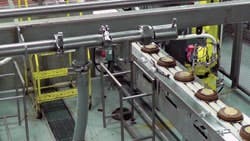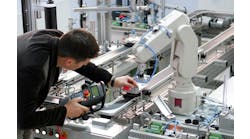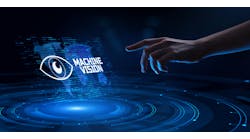Dan Hebert was senior technical editor for Control, Control Design and Industrial Networking.
Concept Systems in Albany, Ore., provides integration services and automation products to machine builder OEMs. These systems typically consist of robotic workcells with integrated machine vision and 3-D laser scanning.
Doug Taylor, project engineer at Concept Systems, describes how a robot with vision is being used to decorate cakes, saying, "We supplied a 3-D vision system retrofit for a pair of robotic cake decorating lines for a large bakery, replacing a 2-D camera system that only provided the center point of the cake (X-Y), but offered no Z-axis information whatsoever," Taylor adds.
The new system scans cakes as they are conveyed into the robotic work cell and generates a 3-D model. "The model is used to generate a unique path for the robot to decorate the cake," Taylor adds. "It is a recipe-driven system, so the same robot can decorate many different cake styles with minimal changeover interactions."
The new system uses Hermary SL1880 scanners (two scanners and two robots per line) tied to a workstation PC communicating to the robot via an Ethernet connection. The four robots are Fanuc PCDK models.
"A Dell Alienware laptop PC on each line runs custom code written in Visual Studio 2012 which accesses the Fanuc PCDKs directly in .net code," Taylor explains. "The PC is the HMI, and it talks to the robots using the robot libraries. All four robots run Fanuc handling tool software, and the program is written in the TPP language."
Two separate but identical lines were retrofitted, allowing the bakery to process up to 40 cakes per minute. Taylor says the new system expanded the product offerings, increased the cake height envelope from plus or minus an eighth of an inch to plus or minus 5 inches, and increased overall throughput.
"We are expanding the system to include new R&D cake decoration designs," Taylor says. "The bakery sees the new 3-D scanner systems as a competitive advantage that will allow them to compete for work with a higher repeatability in the decorations at a much more competitive price point than they have been able to offer in the past."
This sidebar story is part of the February 2014 cover story "Add Vision to Robots — See the Difference."






